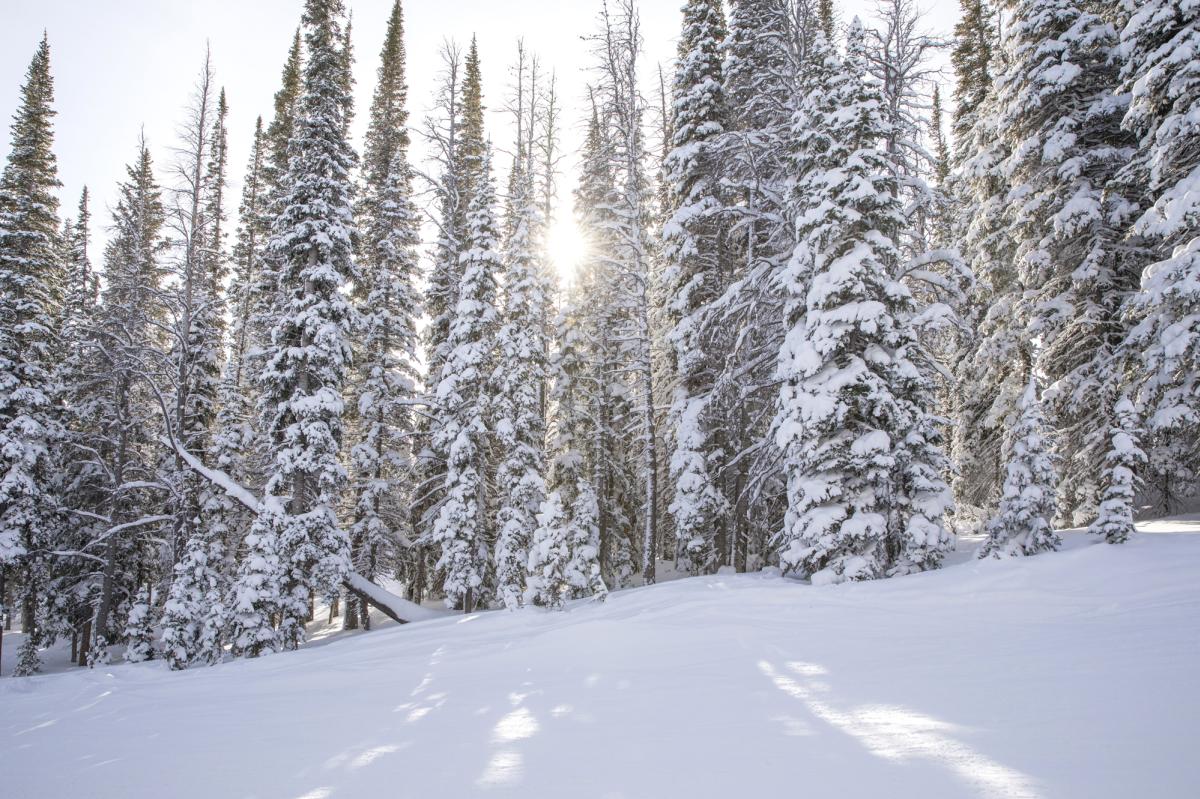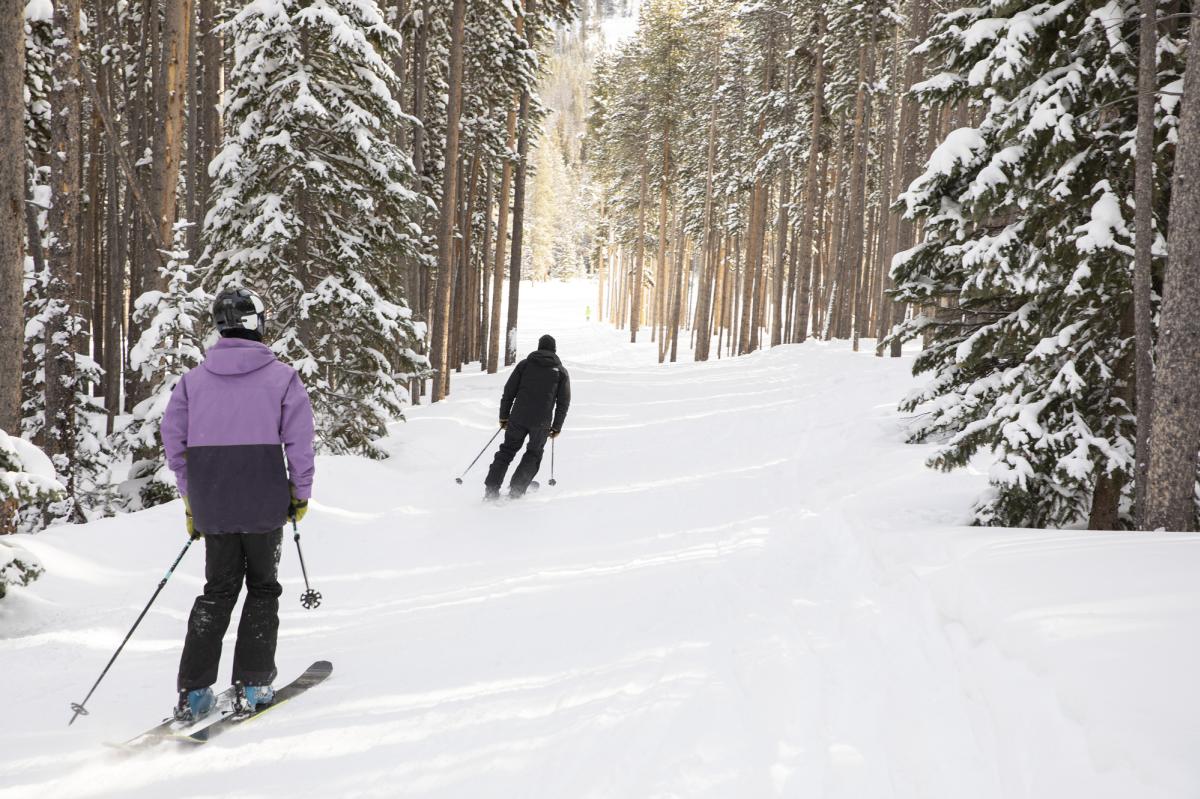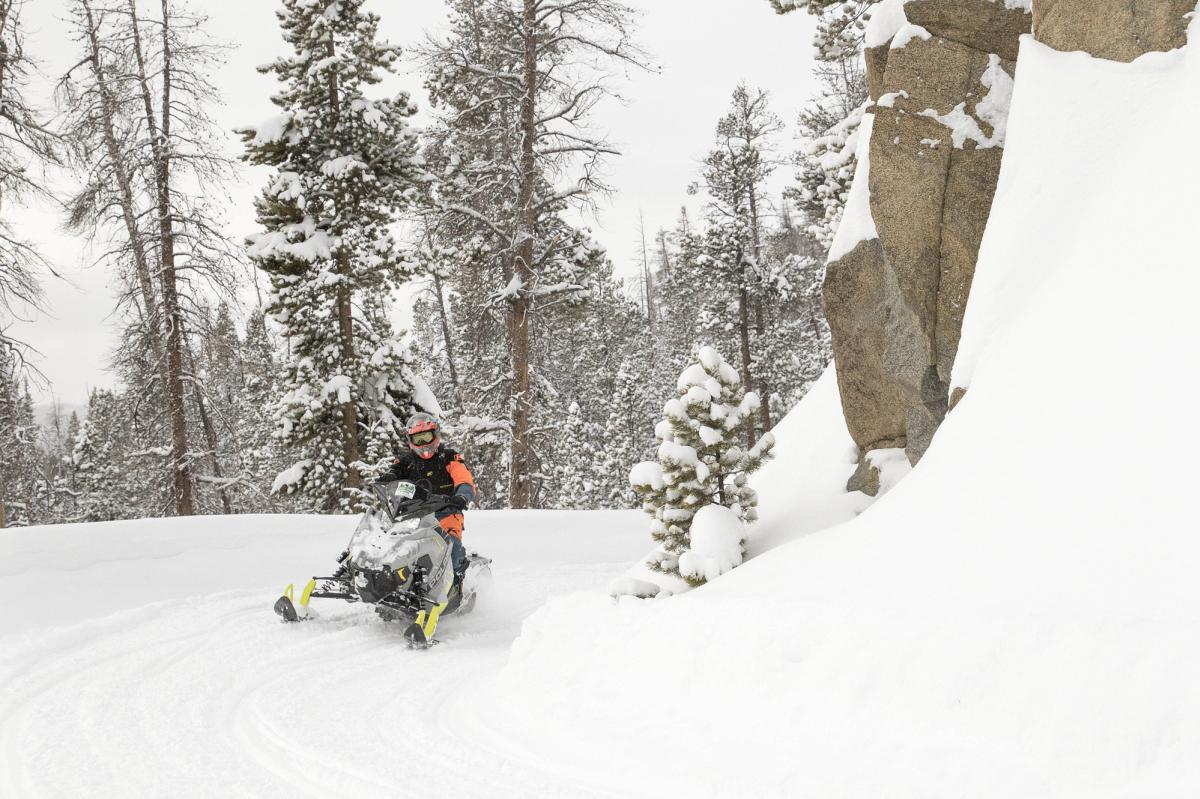The town of Laramie rises 7200 feet above sea level in the Rocky Mountains and is surrounded by outdoor recreation areas on all sides, none of which are more than an hour’s drive away (and some as quick as 15 minutes or less!). This unique geography makes Laramie an excellent location for winter recreation. The Snowy Range Mountains and the Tie City / Happy Jack Recreation Area, both part of the stunningly beautiful Medicine Bow-Routt National Forest, are the main stars of Laramie’s winter backyard.
How might you choose to enjoy and explore this backyard? Options are plentiful and include cross country and skate skiing, snowshoeing, fat biking, ice fishing, sledding, snowmobiling, and downhill skiing and snowboarding at the Snowy Range Ski Area.
We’d love to have you visit us here in Laramie for your next winter getaway! As you are out exploring our wintry-wonderlands, we ask that you please do your part to respect the landscape and your fellow recreators by following the guidelines listed below.

Learn About Usage Rules
Part of being a respectful recreator involves educating yourself on a given area’s trail usage rules. You’ll need to verify, for example, whether or not you can bring your furry friend, and if so, whether or not you’ll need to leash him.
You should also do your homework on any permits or day usage fees that may be required. For snowmobilers, this means purchasing an annual permit for $35.00, available at Elway Powersports and Frontier Cycles in Laramie as well as Albany Lodge in Albany. Skiers, snowshoers, and fat bikers will need to pay a day usage fee of $5.00 at the Tie City / Happy Jack Recreation Area.

Plan and Prepare
Preparation is crucial to having a safe and enjoyable time in the great outdoors, especially during the harsher conditions of winter. So make sure you have done your homework about an area, that you have all the needed supplies (plus a just-in-case emergency kit), and that you have a healthy respect for your own limitations. Unprepared and reckless adventurers are more likely to require emergency evacuation or search and rescue efforts and resources that are best reserved for truly unforeseen situations.

Follow Proper Trail Etiquette
Knowing and following proper trail etiquette is a huge part of being a responsible and respectful winter recreator. As is the case with the Tie City / Happy Jack Recreation Area, many winter recreation areas are set up for multiple kinds of winter activities, and when every recreator is aware of the social graces that apply to their chosen sport, we can all play nicely in the snow together.
Use The Correct Trails
To start, snowshoers and fat bikers should stay off groomed ski trails. If you disrupt a groomed ski trail, you damage the even plane that skiers rely on for traction and forward momentum. Instead, stick to the multi-use trails. Fat bikers should also take care to adjust their tire pressure to meet snow conditions (generally, the softer the snow, the less pressure you need) so as to not ruin the trails. If you are sinking into your tracks too deep, it’s time to call it a day.

Step Aside When Not in Motion
Regardless of your chosen sport, if you need to stop to take a break, adjust your gear, or have lunch or a snack, be sure to step off to the side of the trail so as to not disturb others. Additionally, if you happen to fall (hey, it happens), repair the snow in the crash area, so long as you are well enough to do so. Smooth the surface as much as possible and, if you’re skiing, press your skis into the snow to reform the tracks.
Know Your Right-of-Ways
Knowing who has the right-of-way is key to practicing proper trail etiquette. Nordic skiers (who include cross-country skiers and skate skiers) should yield to those going downhill as they will be moving at higher speeds and unable to stop as easily. And while many groomed ski trails go both ways, make sure you study the trail maps to avoid going the wrong direction on a one-way.
Unlike cross-country and skate skiers, fat bikers and snowshoers should follow hiking rules by yielding to those going uphill so as to not interrupt their momentum.

If you’re sharing an area with snowmobiliers, you will most likely hear them coming before they can see you, so keep your ears peeled and give them plenty of space. Snowmobiliers, for their part, should slow down as soon as they see any non-motorized travelers, and pass with care. Hand signaling among snowmobilers is also a good practice, whereby each rider holds up fingers to indicate the number of riders behind them, with the last rider holding up a closed fist to signal that they are the last in the party.
Note: Brian and Dani Harrington are independent writers contracted by Visit Laramie. Views and opinions expressed here are their own and do not reflect those of the Albany County Tourism Board.



